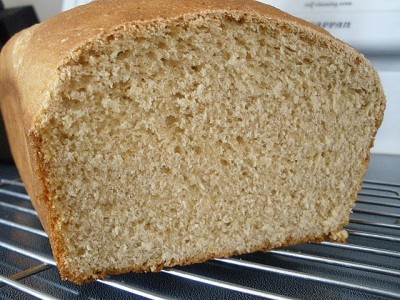We have a new pet in the house. It’s my sourdough starter! Meet Breadipus Rex.
In my quest to be a Jill of all trades, I decided to conquer the realm of sourdough and make my own starter. Starter is actually really easy. It is just flour and water. The key is time. You start with equal parts of flour and water (say 50 grams of each). Mix and let it sit overnight. The next day, do another 50/50 flour water mix to feed it. For the subsequent days, discard half and then replace with a new 50/50 mix. The reason for the discard is that your starter will grow exponentially if you just keep adding flour and water. You may not see anything for a long time, as happened to me. I think the cooler environment slowed growth. It was a good 5 days and then the starter had bubbles in it. After each new feeding, the starter bubbled and grew to what you see above. It smells like yeast, too. I nurtured a new pet!
I decided on a lazy sourdough – aka the no-knead method. I don’t mind something taking a lot of time if most of that time doesn’t involve me doing anything 
This recipe could not have been simpler:
Ingredients:
- 1/4 cup of sourdough starter
- 1-1/4 cups of warm water
- 16 oz of flour (I used unbleached white as a test)
- 1-1/2 teaspoons of salt
First off, stir the starter so that you are measuring actual starter and not just bubbles:
In a large bowl, mix the starter with the warm water:
Add the flour and the salt and mix well. I chose white flour for this first loaf because I wasn’t sure how well I would do working with sourdough and didn’t want the complications that whole grain flour baking can introduce. This was all about the method.
I did the final mixing by hand to make sure all flour was incorporated. Then I formed into a ball and covered with plastic wrap to sit overnight on the counter.
The next morning, I checked the bowl, curious to see what happened. We have some proofing!
Breadipus Rex did his job. Check out all the yeast bubbles:
I was quite pleased with myself at this point. Now, this was the most amount of work to be done with the dough. I dumped it out onto a floured board. It is pretty sticky.
Using floured hands, I pushed the dough into a rough rectangle.
Then fold 1/3 third of the dough over:
Then fold over the other other third so you have a short rectangle (unpictured). I then folded that over lengthwise to make a square:
Then I picked this up and folded the corners under to make a round ball. I dropped this into a parchment paper lined casserole dish (which has a lid):
That took all of 1o minutes. I do like the easy. I covered this with plastic wrap and we went out to enjoy a nice leisurely breakfast bagel
About 2-1/2 hours later or so, I checked the dough:
I took the dough out of the casserole dish, which was the reason for the parchment paper sling. You need to heat up the casserole dish, so the sling made it easier. I wanted the dough in the dish it would bake in to proof for size reasons. I actually thought ahead on that, and before coffee, even!
The casserole dish and lid went into the oven at 450 degrees F to heat up. I used a knife to put an X on the dough:
In looking at this dough, I really didn’t think I would get any rise out of it, and I was a little concerned about my success.
Once the oven heated up, I used the sling to drop the dough into the casserole dish and put the lid on (remember the lid is hot!).
Bake for 30 minutes, then remove the lid and bake another 15 or so until the crust is golden brown and the loaf sounds hollow. I about squealed when I saw what came out of the oven!
That score made quite the split in the bread, too!
After what seemed to be an interminably long wait to cool, we sliced the loaf. It had a wonderful crunch and chewy texture to it.
The bread had a wonderful sourdough flavor to it as well. Perfect with a little butter and strawberry jam:
I am in love! Did you know that true sourdoughs are well tolerated by celiacs? Something about the natural fermentation. Just make sure if you buy sourdough that it doesn’t have added gluten or dough conditioners.
Starter upkeep. One you have the starter made, feed it a dose of flour/water and stick it in the fridge. You can feed it once a week or so to keep it active (discarding some each time). The fridge will retard the growth of the yeast and make it a little dormant. Just take it out of the fridge, stir it up, and bring to room temperature to use.






































































































 That is when it still feels a little awkward to be the only woman in the free weights area.
That is when it still feels a little awkward to be the only woman in the free weights area.




























